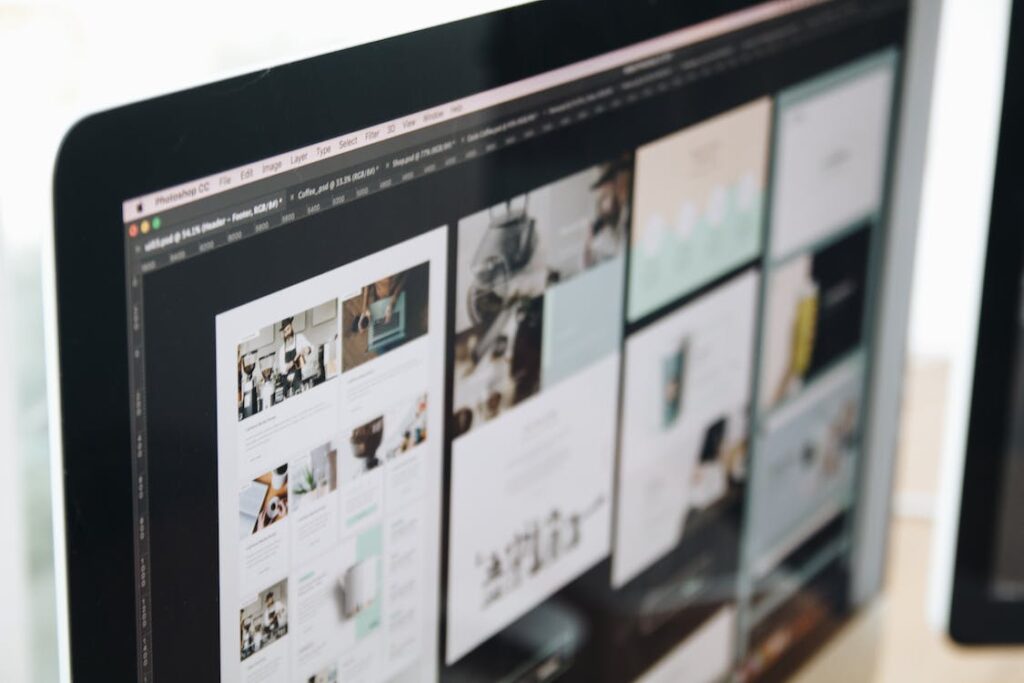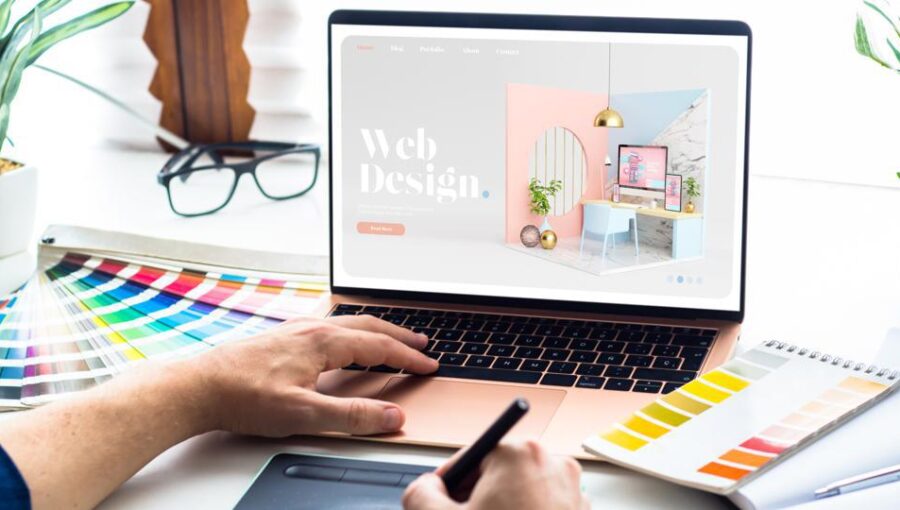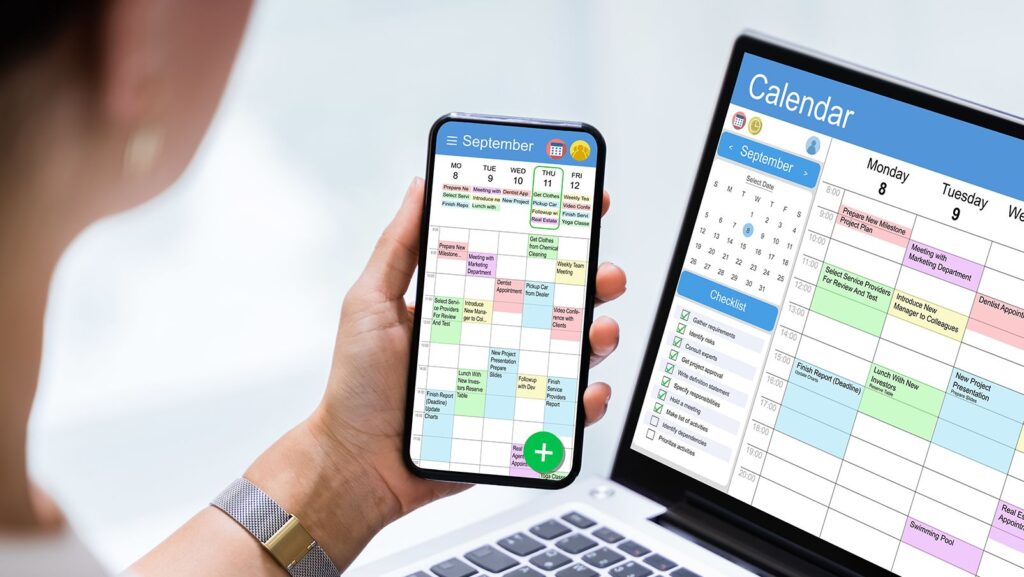How to Hire the Best Designer for Your Print on Demand Business

Looking for a designer to help your print-on-demand business stand out? You need someone who not only understands design principles but also has experience creating designs that sell. In this guide, we’ll show you step-by-step how to hire the best designer for your needs. From evaluating portfolios to assessing communication skills, you’ll learn everything you need to know to make an informed decision and find the right fit for your business.
Determine your design needs

When determining your design needs, it’s important to consider your budget and the cost of hiring a designer. You may want to explore creative options such as using Fiverr or other online platforms that offer affordable design services. Additionally, be clear about the type of designs you need and define the scope of the project to ensure you hire a designer with the appropriate level of experience for your print-on-demand business.
Identify the type of designs you need
When it comes to hiring a designer for your print-on-demand business, it’s important to identify the type of designs you need upfront. This will ensure that you find someone with the relevant skills and experience to meet your requirements within your budget. Here are three types of designs commonly needed by print-on-demand businesses:
- Brand identity design: The creation of visual elements such as logos, colors, and fonts that represent your brand.
- Product packaging design: The design of product labels, tags, or boxes which communicate details about products.
- Marketing collateral design: Creation of digital or physical marketing materials such as brochures, flyers, or social media posts.
To keep costs low while still getting creative work done on time consider using services like Fiverr where freelancers offer graphic designing at reasonable prices.
Assess the level of experience needed
When assessing the level of experience needed for your print-on-demand business, consider the budget and creative scope of your project. A junior designer with 0-3 years of experience may be a cost-effective option for simpler designs, while mid-level designers (3-6 years) can handle more complex projects within a reasonable budget. For senior-level designers (6+ years), expect to pay higher costs but receive top-tier creativity and expertise for intricate design work. Consider hiring through platforms like Fiverr to find talented freelance designers at competitive rates that match your specific needs.
Define the scope of the project
When hiring a designer for your print-on-demand business, it’s important to define the scope of the project from the outset. This will help ensure that both you and the designer are clear about what is expected and avoid any misunderstandings later on. Here are some key points to consider when defining your project scope:
- Project timeline and milestones: Clearly outline how long you expect the project to take, including any specific deadlines or milestones along the way.
- Number of revisions allowed: Decide upfront how many rounds of revisions are included in your budget or cost estimate, so there aren’t any surprises later.
- Ownership rights and deliverables: Be clear about who will own the final designs and what files you’ll receive at completion.
By establishing these parameters early on in your working relationship with a designer (whether through Fiverr or another creative platform), you’ll be able to move forward more confidently knowing that everyone is aligned around expectations.
Evaluate designer portfolios

When evaluating designer portfolios, it’s important to review their past work and assess the style and quality of their designs. Look for consistency in their design choices and evaluate whether they align with your brand’s aesthetic. Additionally, check for versatility and adaptability by looking at a range of projects they’ve worked on in different industries or mediums. A well-rounded portfolio is key when hiring a designer that can bring fresh ideas to your print-on-demand business.
Review past work
When reviewing a designer’s past work, there are some key things to keep in mind. Firstly, look for consistency in their portfolio – this is a good sign that they have developed their style and can produce quality work regularly. Additionally, it’s important to check for relevant experience with print-on-demand designs specifically. Make sure the designer has worked with similar products before and understands the unique requirements of this type of design.
Finally, pay attention to the level of detail and quality of their work overall. Look closely at examples from different projects to get an idea of how thorough they are in their approach. A keen eye for detail will help ensure that your final product is polished and professional-looking. By taking these factors into account when assessing potential designers’ portfolios, you’ll be well on your way to finding someone who can create great designs that meet your business needs perfectly!
Assess the style and quality of their designs
When it comes to hiring a designer for your print-on-demand business, assessing the style and quality of their designs is crucial. Here are some key points to keep in mind:
- Evaluate if they have a distinct design style: A good designer should have a unique aesthetic that sets them apart from others in the field.
- Check if their designs align with your brand’s aesthetic: Make sure the designer’s work fits with the overall look and feel of your business.
- Determine if their designs are up-to-date and modern: You want someone who stays current with design trends and knows how to make designs that will appeal to today’s audience.
By considering these factors, you can ensure that you hire a designer whose work will help elevate your brand.
Check for versatility and adaptability
When looking to hire a designer for your print-on-demand business, it’s important to check for versatility and adaptability. This means evaluating how well they can approach different design challenges and create diverse types of graphics or illustrations. Additionally, assessing whether or not they’re able to take feedback constructively is crucial in ensuring a successful working relationship.
Here’s what to look for when checking for versatility and adaptability:
- Review their portfolio and see how they’ve approached different design challenges
- Evaluate the range of styles and designs they have created in the past
- Assess their ability to incorporate multiple revisions based on constructive feedback
Conduct interviews and assess communication skills

During the hiring process, it’s important to conduct interviews to assess a designer’s communication skills. Ask open-ended questions that allow them to showcase their abilities and provide insight into their experience. Additionally, pay close attention to how they communicate complex ideas and instructions.
To further evaluate communication skills, consider conducting a test project or providing a task with specific requirements. This will allow you to see how well the designer can follow instructions and communicate any issues or questions effectively. Remember, effective communication is crucial for success in any design role, so taking the time to properly assess these skills during the hiring process is essential for finding the best candidate for your print-on-demand business.
Ask relevant questions to gauge expertise and experience
When hiring a designer for your Print on demand business, it’s crucial to ask relevant questions that will provide insight into their expertise and experience. Here are some questions you can ask:
- Design background and education:
- What is your design education or training?
- Have you taken any courses or workshops in the field of print-on-demand specifically?
- Previous design work experiences:
- Can you show me examples from your portfolio similar to what we need?
- How would you approach this particular project based on past experiences?
- Experience with Print on demand industry:
- Have you worked with clients in the print-on-demand industry before?
- Have worked with different print-on-demand platforms, and apps (like printseekers.com)
If yes, explain how did those projects go?
Asking these types of questions will help ensure that the designer has the necessary skills and knowledge to effectively support your Print-on-demand needs.
Assess their ability to understand and follow instructions
One way to assess a designer’s ability to follow instructions is by providing them with a sample project and specific instructions. This will test their attention to detail and ability to execute tasks as required. After providing the instructions, it’s important to check for comprehension of the provided information.
Another method is asking about their process for understanding client requests. A good designer should be able to ask clarifying questions if they don’t understand something or need additional information before beginning work on a project. This shows that they are attentive, proactive, and willing to go above and beyond to deliver quality results.
Evaluate their communication skills
Discussing a potential designer’s communication skills is crucial in ensuring a successful collaboration. Here are some ways to evaluate their proficiency:
- Discuss preferred communication methods (email, phone, etc.)
- Observe how they handle feedback or criticism
- Inquire about any language barriers or misunderstandings in previous projects
By asking these questions and paying attention to their responses, you can gauge whether the designer will be able to effectively communicate with you throughout the project. Additionally, evaluating their ability to handle feedback and address concerns will help ensure that any issues are addressed promptly and efficiently. Lastly, discussing potential language barriers upfront can prevent miscommunications down the line.
Consider the designer’s availability and timeline

When looking to hire a designer, it’s important to consider their availability and workload. You want to ensure that they have enough time and energy to focus on your project without getting overwhelmed by other commitments. Additionally, agreeing on a clear project timeline and deadlines upfront can help set expectations for both parties and keep the project on track. Make sure you communicate openly about these factors before hiring a designer to avoid any potential conflicts down the line.
Discuss availability and workload
When hiring a designer for your print-on-demand business, discussing their availability and workload is crucial to ensure they can deliver quality work within the agreed timeline. Here are some important questions to ask:
- What are their current projects and how much time can they allocate to your project?
- Do they work full-time or part-time as a freelancer/designer?
- Are there any upcoming vacations or events that may affect their availability?
Knowing this information upfront will help you manage expectations and avoid potential delays.
Asking about availability and workload is just the beginning of the hiring process. To ensure a successful partnership with your designer, it’s also important to agree on project timelines and deadlines. Stay tuned for our next section on how to set clear expectations with your designer.
Agree on project timeline and deadlines
Set clear expectations for the final product delivery and agree on the project timeline and deadlines with your designer to ensure a smooth process. Confirm their estimated timeline to complete the project, taking into account any potential roadblocks that may arise. It is essential to include buffer time in case of unexpected delays or revisions needed to avoid missing crucial deadlines.
Here are some tips on how to agree on project timelines and deadlines:
- Clearly define when you need the final product delivered
- Discuss your designer’s estimated timeline for completing the design
- Build in extra time for unexpected changes or delays
- Stay flexible and open with communication throughout the process
Negotiate and finalize the contract

To negotiate and finalize the contract with your chosen designer, it’s important to have a solid understanding of the project details and scope. This means discussing specific deliverables, timelines, and any potential challenges that may arise during the design process. You should also clarify ownership rights for all work created under the contract.
Once you’ve agreed on project details, it’s time to iron out payment terms and schedule. It’s essential to be clear about how much you’ll pay upfront versus upon completion of milestones or final delivery. Don’t forget to establish a timeline for payments as well so both parties know when compensation will be received.
Finally, before signing the agreement, ensure that everything discussed has been documented in writing within the contract – this includes deadlines, payment terms/schedule/agreement amount/ownership rights/etc. Make sure both parties thoroughly review it before signing off on anything; having legal counsel available can smooth things over if there are any disagreements or misunderstandings down the road.
Discuss project details and scope
Identifying the purpose of your design is crucial to hiring the best designer for your print-on-demand business. This will help clarify specific requirements and preferences to ensure that both parties are on the same page throughout each stage of the project. Setting realistic timelines for each stage of the project will also help manage expectations and avoid any unnecessary delays.
Here are some key points to consider when discussing project details and scope with a potential designer:
- Define the purpose of your design, such as creating brand awareness or increasing sales.
- Identify specific requirements, including size, colors, imagery, typography, and style.
- Clarify any preferences you have regarding aesthetics or functionality.
- Set realistic timelines for each stage of the project from initial concept development to final delivery.
By establishing clear guidelines upfront in these discussions, you can streamline communication and ensure that you find a designer who can deliver exactly what you need within an agreed-upon timeframe.
Agree on payment terms and schedule
Determining a clear payment plan and associated fees is an essential part of successfully hiring a designer for your print-on-demand business. Here are some key aspects to consider when agreeing on payment terms and schedule:
- Determine an appropriate budget range for the project, based on its scope and requirements.
- Agree on a payment schedule that works for both parties, whether it’s upfront or in installments (e.g. half upfront, half upon completion).
- Establish any extra fees or charges upfront, such as additional revisions beyond what was agreed upon initially.
By setting transparent expectations from the outset, you can avoid misunderstandings and ensure that you and the designer are satisfied with the financial arrangements throughout the project.
Finalize contract and sign agreement
To ensure a successful collaboration with your chosen designer, it’s crucial to finalize the contract and sign an agreement that addresses all aspects of the project. This includes detailed specifications such as deadlines, deliverables, and any other relevant requirements. Defining ownership rights over final designs is another key consideration that should be clearly stated in the contract.
Incorporating clauses that address contingencies like missed deadlines or disagreements can also help prevent potential issues down the line. By taking these necessary steps and ensuring everything is covered in the contract before starting work, you’ll have peace of mind knowing everyone involved is on the same page and committed to delivering a successful outcome for your print-on-demand business.




